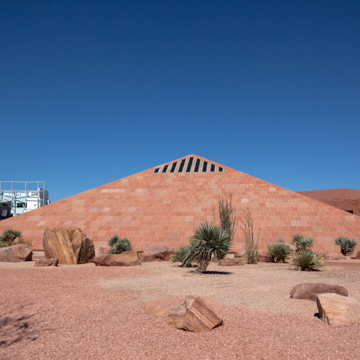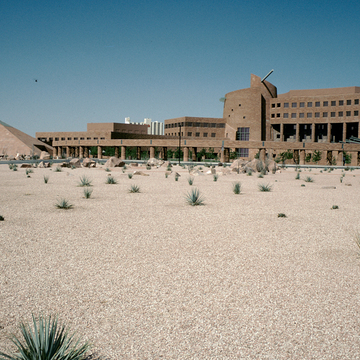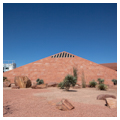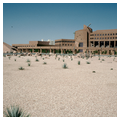The massive county government center rises out of the flat valley in geometric masses clad in native red stone. Located on a section of the old Union Pacific Railroad Yards, across the tracks from downtown, the complex reflects a new trend in Las Vegas—the belief that public architecture should be first class. Instead of looking to downtown or the Strip, the Denver-based architects drew inspiration from the expansive desert landscape. They also used classic forms—pyramid, tower, and amphitheater—to refer to the historic public function of architecture. Sections of the building curve around a large circular entrance plaza, bordered in part by a portico that evokes Native American brush shelters. The cafeteria is housed in a large pyramid suggesting
You are here
Clark County Government Center
1992–1995, C. W. Fentress, J. H. Bradburn and Associates. 500 S. Grand Central Pkwy.
If SAH Archipedia has been useful to you, please consider supporting it.
SAH Archipedia tells the story of the United States through its buildings, landscapes, and cities. This freely available resource empowers the public with authoritative knowledge that deepens their understanding and appreciation of the built environment. But the Society of Architectural Historians, which created SAH Archipedia with University of Virginia Press, needs your support to maintain the high-caliber research, writing, photography, cartography, editing, design, and programming that make SAH Archipedia a trusted online resource available to all who value the history of place, heritage tourism, and learning.




